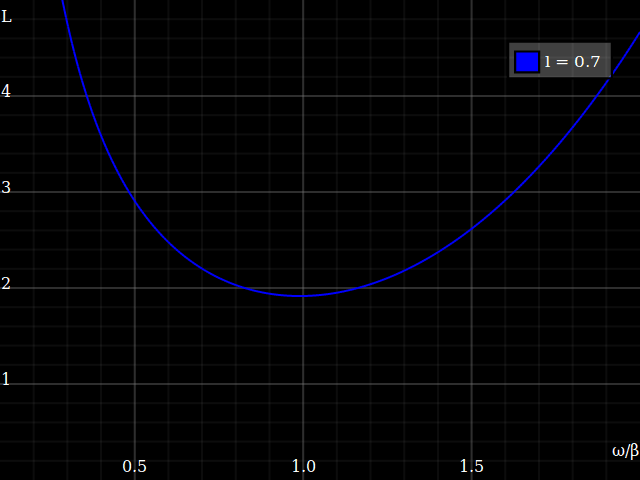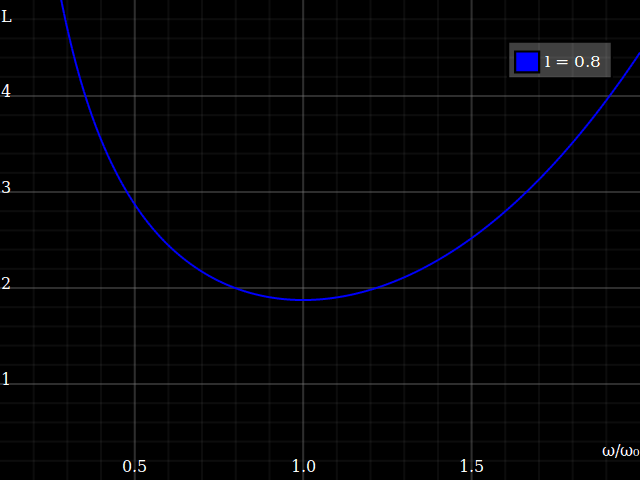Does crank length affect the number of gears a bicycle needs?
Bicycles Asked by Tobe on March 22, 2021
When I was a child I noticed that as I out-grew my bike (or when I rode a smaller child’s bike) I felt like I could accelerate better. The smaller bike seemed ‘nippier’, and in hindsight it was similar to driving a diesel with quite a flat torque curve. I now imagine this is what it would be like to ride with short cranks.
So the question is: if I rode with 135mm cranks could I get away with fewer gears than when riding with 175+mm cranks?
Edit:
I have read a similar question now. It doesnt address the biomechanics of how cranklength effects the varying proportion of glute and quads during the rotation. The closest this was addressed was in a comment to that question that noted the difference between doing a half squat and a full squat. I feel long cranks tends to a full squat, which feels weak.
The gain ratio is valid but fairly intuitive.
It would be great to find papers that reference anatomical models that have muscle length force functions coupled with the thigh and shin bone levers that can be converted into graphs of force/torque contributions of muscles at the pedal over a whole cycle for varying power levels and cranklengths.
Or experimental data on max cadence range at which varying power levels (say 50%,60%,70%,80%,90%) can be maintained for different cranklengths.
5 Answers
Not really. You might want different gears, but probably not fewer.
Shorter crankarms give you less mechanical advantage—they're functionally equivalent to being in a higher gear. So you might want a lower gear range to compensate.
It is common to express mechanical advantage as "gear inches"—this is
(front sprocket/rear sprocket) × wheel diameter
This obviously doesn't account for crankarm length. Sheldon Brown proposed a measure he called the gain ratio that would do exactly that:
(front sprocket/rear sprocket) × (wheel radius/crankarm length)
From this, you can see that wheel radius/crankarm length will typically be about 2. If the denominator is smaller, the quotient is bigger, so for a given set of gears, the net gain ratio would be higher. For that reason, you'd probably want a proportionately lower gear range.
Answered by Adam Rice on March 22, 2021
I suspect you just got too strong for the bike. Kids' bikes have short cranks because the kids' legs are too short to handle full length cranks. They also have lower gears because their legs are not as strong. If you get a single speed bike with something like 40/25 gearing you will be able to accelerate very quickly from a stop due to the low gear. You could get away with just that gear if you were happy not to go very fast, but you will spin out rather quickly. When you outgrew a bike the gearing was too low for the strength of your legs, so you could accelerate very quickly. It happened to come with shorter crank arms.
Answered by Ross Millikan on March 22, 2021
from a comment:
I think shorter cranks would the widen the angle of rotation where your leg can produce decent torque. When my knee is making a right angle I feel my torque is at its lowest. I think this weak spot would be eliminated.
When considering optimal transfer of power from legs to the drive train, the length of the crank arm is not the only variable. Seat position relative to the crank is also very important, both fore-aft and height. The seat position will affect how bent the knee is at points on the crank's rotation.
Bear in mind that professional bike racing teams have been trying to optimize power transfer from rider to bike for decades. If crank arms much shorter that the standard ~170mm were so much better that's what racers would use and that is what would have flowed down to bikes used by amateurs and casual riders.
Answered by Argenti Apparatus on March 22, 2021
- Does crank length effect the number of gears a bicycle needs? Well , crank length is determined by the size of the rider , in relation particularly to leg/inseam length.
So the question is: if I rode with 135mm cranks could I get away with fewer gears than when riding with 175+mm cranks?
You need to evaluate the type of terrain and torque/acceleration characteristics that you want to achieve. By reducing the number of gears you increase the gear ratios between the gears (unless you get your own special custom chain sets) and increase the speed required between gear changes(to avoid bogging down due to mechanical disadvantage) to maintain your speed.
Answered by binaryOps20 on March 22, 2021
This question turns out to be quite a lot more involved that I thought at first. But in the end, a lot of calculation just confirms (assuming I made no mistake) that no, shorter cranks do not allow you to get away with fewer gears: they allow you to pedal at higher cadence while retaining somewhat reasonable efficiency, but in the end they're never more efficient.
As a most idealised approximation, as per Adam Rice's answer, crank length simply forms part of the effective gear ratio, i.e. the speed and output power goes like
vbike = ω·ρgear = vped⁄lcrank·ρgear
Pdrive = τped·ω = Fped·vped
where
- ω is the cadence
- Pdrive is the power you put through the drivetrain (ignoring friction losses in the gears/chain, which are low in a well-maintained bike)
- lcrank is the crank length
- vbike is the speed you're riding at
- vped is the speed the pedals/feet move at (relative to the BB)
- Fped is the force on the pedals, assuming perfect coordination
- ρgear is the gear ratio (including wheel size – you could factor this out, but might as well consider it just a constant factor)
- τped is the pedal torque
For the sake of comparison, we should consider speed and power as constants. But the formulas above don't say anything about the loss mechanisms, which is what choice of cadence is actually about.
In terms of pedalling, there are mostly two factors that incur energy loss L:
Too hard gears require burning energy in muscle-overloading, to get out of the saddle and do body movements that don't feed the power very well into the drivetrain. This term is governed mostly by pedal force, i.e. for a given output power you have
Lgrind ∝ Fped = τped⁄lcrank = Pdrive⁄(ω · lcrank)Too light gears require the leg mass to be accelerated back and forth at rapid pace. Essentially, you need to provide an extra centripetal force that doesn't contribute to propulsion at all, just to keeping the legs moving. Unlike with the grinding loss, this is a kinematic force, i.e. the loss is the actual power that's put into it (force times movement-speed)
Lspin ∝ FCP·vped = (vped2⁄lcrank) · vped = ω3·lcrank2
[I'm not sure about these exact formulas – specifically whether linear proportionalities are really appropriate. But I tried a couple of variations, and they don't change the rest of the answer much.]
Let's condense the unknown power and proportionality factors – which depend strongly on the rider – into a single constant α, then we have the total loss
L ∝ α⁄(ω · lcrank) + ω3·lcrank2
or
L⁄⁴√α3 ∝ ⁴√α⁄(ω · lcrank) + (ω⁄⁴√α)3·lcrank2
or, with β = ⁴√α,
L ∝ (ω⁄β)-1 · 1⁄lcrank + (ω⁄β)3·lcrank2.
Plotting this for different crank lengths looks thus:
This tells us, somewhat unsurprisingly, that for a shorter crank length the optimum cadence will be faster. More interestingly, it tells us that you get a deeper “valley” if the crank length is long – i.e., longer cranks are more efficient! –That, of course, only holds within reason: you can't make the cranks arbitrary long, at some point the legs just wouldn't be able to follow, and even before you get ærodynamic issues. (To the other side, the muscles and joints probably aren't happy with a super-short action either.)
Anyway the mechanical optimum efficiency isn't that different – note that I vary the crank length by a ludicrous factor of 4 in the above plot, but minimum loss only varies by 25%. That explains why some disciplines do opt for shorter-than-ideal cranks, because the advantages (æro, ground clearance etc.) may well outweight the slight loss in pedalling efficiency.
It's mostly the optimum cadence that is different, namely
ωopt ∝ 1⁄⁴√lcrank3
This still doesn't answer the title question yet: does crank length affect the gear range a bike needs? – Well, looking at the plot above, I first thought that it demonstrates length does affect the needed range: with short cranks, you get a “shallower” curve, i.e. short cranks allow higher difference between the highest cadence that's usable and the lowest that is. IOW, you can get away with having a bit fewer gears, and then just use those “outskirts” of the cadency range where the efficiency is still ok... right?
However, on closer inspection this doesn't really hold up: in practice, you'll anyway have to choose the gears so you can operate in the optimum cadence region, i.e. you rescale the cadences overall by another constant. Given some constant target speed,
ρopt ∝ 1⁄ωopt ∝ ⁴√lcrank3 = lcrank¾
(Side note: therefore, crank length should not be understood as just a linear factor in the gear ratio – it is a factor, but less than linear.)
If we do that, centering the plot always around the optimum cadence, we see that for any discrepancy from the optimum, longer cranks result in less losses:
Answered by leftaroundabout on March 22, 2021
Add your own answers!
Ask a Question
Get help from others!
Recent Questions
- How can I transform graph image into a tikzpicture LaTeX code?
- How Do I Get The Ifruit App Off Of Gta 5 / Grand Theft Auto 5
- Iv’e designed a space elevator using a series of lasers. do you know anybody i could submit the designs too that could manufacture the concept and put it to use
- Need help finding a book. Female OP protagonist, magic
- Why is the WWF pending games (“Your turn”) area replaced w/ a column of “Bonus & Reward”gift boxes?
Recent Answers
- Lex on Does Google Analytics track 404 page responses as valid page views?
- haakon.io on Why fry rice before boiling?
- Peter Machado on Why fry rice before boiling?
- Jon Church on Why fry rice before boiling?
- Joshua Engel on Why fry rice before boiling?

